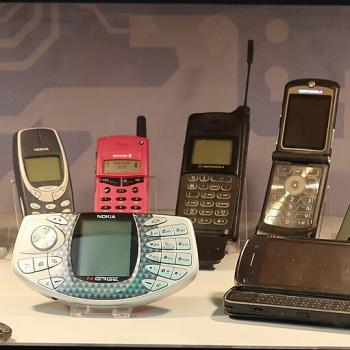Up to now, I’ve refrained from commenting on the protests by black* students at American universities, not wanting to simply chime in with what’d be a repetition of other commentary out there. You know, the sort that advises the reader to take a gander at TheDemands.org, see if their alma mater is on the list, and excerpts some of the students’ demands, which they aim to see realized via sit-ins and other campus protests. Demands such as these, taking Michigan State as an example:
We DEMAND that Michigan State University establish a College of Race, Gender, Sexuality, and Class Studies by Fall 2017. This college will be home to the newly created Department of African American and African Studies, and it would establish a Department of Chicano and Latino Studies, Department of Women and Gender Studies, a Department of Native American Studies, a Department of Asian Pacific American Studies, and a Department of Lesbian, Gay, Bisexual, Transgender and Queer Studies. . . .
We DEMAND an increase in tenure-stream faculty whose research specializes in Black Politics, Black Linguistics, Black Sociology, Black Psychology, African politics, Black Queer Studies, Hip-Hop Studies, African American Literature, African Literature, and Decolonial Theory. All these faculty hires must be approved by a panel of Black student leaders and will be tenured in the Department of African American and African Studies. . . .
[W]e DEMAND the establishment of a new six (6) credit, Inclusion and Intercultural Studies General Education requirement for all students enrolled on campus. To fulfill this requirement, students will have to take two (2) three-credit courses in the new College of Race, Gender, Sexuality, and Class Studies. . . .
We DEMAND that the number of underrepresented students enrolled at Michigan State University from Detroit, Flint, Lansing, Benton Harbor, Kalamazoo, Saginaw, Pontiac, Highland Park and other urban areas from across the state and nation be tripled by the 2017-2018 academic year.
(* Incidentally, “black” is the label of choice by these students, or rather, “Black” with capitalization.)
Essentially, there are three categories of demands (I’ve only excerpted a few above): demands for more black-related academic programs; demands for social, psychological, academic, and financial supports for black students; and demands for increased numbers of black students.
With respect to the first of these, these protests and demands aren’t new, but part of a cycle. Perhaps you recall sit-ins from your college years, depending, anyway, on your age, as they come and go. Here’s an article by the AP from last week: “Black studies programs lose ground on campus” — or rather, that’s how it was titled in the local paper; online it’s “Experts: Black studies programs facing campus challenges.” In essence, the programs established as a result of student demands such as the one above, decline in size over time, and are cut or consolidated, until the next round of protests brings new commitments by the administration.
For example:
Officials at San Jose State University in California cited the struggle by its African American Studies Department to attract enough students to fill upper division classes and having only one full-time faculty member in a proposal to merge the program into another department.
Other examples were similarly cited — and the bottom line seems to be that these programs were established as a result of political pressure, in excess of actual student interest, so that when it becomes that their enrollment numbers can’t support the number of course offerings, they fall prey to cuts. And it’s not clear to me (or perhaps I’m not cynical enough) what the basis for these types of demands is: are there students who want to study these topics at a serious academic level and are unable to? Is an African American Studies Department a symbol, the establishment of which is required to communicate to students the university’s commitment to equality? Or is this a means of adding to the body count of black professors, another student demand?
Also note that the new sets of demands seek to solve the demand issue by mandating that all students enroll in these courses as graduation requirements, but any university that created graduation requirement specific enough to require all students to study two semester’s worth of black history and popular culture would struggle to keep its enrollment numbers up. And any university that demanded incessant and burdensome “cultural sensitivity” training sessions of its faculty and students would find that this would be similarly rejected.
With respect to the demand to increase the student body representation, the MSU student body is currently 8% black, according to their own data, while the state is 14% black, according to the census bureau. That compares to 5% at the University of Michigan, or 11% at Western Michigan (less selective college in Kalamazoo), 21% at Wayne State (in Detroit), and 7% at Central Michigan. And some further demographic context: if black students were represented exactly in proportion to their share of the population nationwide, they’d be 13% of the population. And that proportion is forecast to stay pretty stable, even as far as 2060, climbing only slightly to 15%, again according to the Census Bureau.
But here’s an article from the New York Times, giving the perspective of the students involved in the protests at Amherst College, “With Diversity Comes Intensity in Amherst Free Speech Debate.”
Students said that as they gathered at Frost Library on Nov. 12, emotions poured out. One young woman said she went to sleep at night wishing she would not wake up. Imani Marshall, a senior pre-med student from Chicago, who is black, felt a shudder of recognition and started to cry.
Ms. Marshall, who went to a selective public school in Chicago and came to Amherst on full financial aid, said she had felt unprepared academically and socially for Amherst. Yet she felt that by asking for help, she would undermine not just her own standing but that of her entire race.
“I feel like an impostor,” Ms. Marshall said the other day over lunch at the central dining hall. “I close myself off a lot of times from help. I always feel like I need to prove to other people that I do belong here.”
Mercedes MacAlpine, a black senior, who attended the Chapin School, an elite all-girls school in Manhattan, said, “You can walk into a room and have it look 50-50 and still not feel valued.”
Racially ambiguous students said they had trouble fitting in. “I’ve been called Rachel Dolezal,” said Kaelan McCone, a freshman from Greensboro, N.C., referring to the white civil rights activist who identified as black. Mr. McCone, whose father came from Ireland and whose mother is African-American, said classmates had demanded that he show them family photos to prove that he is black.
Sanyu Takirambudde, a sophomore from South Africa, who is black, said she felt like a token. “I never felt so stupid,” Ms. Takirambudde said of her experience in her science and math classes at Amherst. “Even when I say the correct answer, no one’s going to listen to me.”
The ethnic mix at Amherst? According to Forbes, black students are represented nearly in proportion to their numbers in the population at large, 12%.
The tweeter who linked to this article originally a couple days ago observed that the insecurities and the feelings of not fitting in, are not limited to blacks, or underrepresented minorities, or poor kids, but are more common that not, for all students as they enter the college environment, with its requirements to manage classwork and finances independently, get along with strangers as roommates, and find your place in a place that seems to increasingly demand that you have a “place” and an “identity” rather than just going about your day.
What’s more, the struggles that black students disproportionately face are not matters of racism on campus. They are disproportionately poor, and these students, despite the large number of earmarked scholarships, still struggle with finances and with the effects of having grown up in poverty, or, at any rate, low-income-ness, and in low-income communities. And those who arrive at the university from middle-class communities and middle-class families are pressured to find their identity through their race and through these new identity groups, transforming stray comments that may otherwise have been nuisances into “microaggressions” and deeply-felt grievances. At least, that’s what I see from the outside. (Hmmm. . . thinking back to college, I never really did much more than go to class, study, and hang out with friends; I never found an interest group to get involved in. Perhaps I never looked hard enough, perhaps there just wasn’t much in the days when your club could, at best, hang up a few signs on campus and hope for some word-of-mouth turnout. Are there alternatives at universities for getting to know other students, besides dorm living, or the Greek system, or ethnic-based groups?)
The reality is that black students will always be in the minority in America — at least, as long as blackness is counted as a “difference” to be marked and measured and made the key to one’s identity, rather than an incidental characteristic, like the particular origin of the immigrant forefathers of students of European ancestry. For most whites, “ethnic heritage” means, at most, enrolling your kid in Irish dance lessons or taking them to German school, or Polish school, or Greek school, on Saturday mornings, or maybe having a special recipe or two passed down from grandma. To be sure, our ancestors may have suffered discrimination upon arriving on these shores, but, heck, a restaurant called DayGo Dogs — with a dog with a “wife-beater” t-shirt and chain — opened up and no one felt microaggressed.
Instead, at our universities, we’re seeing a perpetuation of segregation, this time voluntarily, in academic disciplines, in dormitories and “safe spaces” and the like, and the insistence that one’s race is one’s key defining characteristic. Surely this is a path towards more, not less, alienation, even if the students who prefer this think it provides them comfort.
Yes, I know that the notion of “color-blindness” as an ideal has been discarded. We’re told that it’s bad to aim for it, and that we should preserve and emphasize and celebrate our differences, in a glorious multicultural tapestry. But this simply won’t work. It can’t work. Differences divide us. To ask us, as a society, to emphasize difference, and yet achieve equality, is to make a demand that goes against human nature. We’re all quite fond of saying that children are naturally accepting and have to be taught to be racist, so that if only we teach them a new ethic of multiculturalism, all will be well. But it seems to me that quite the opposite is true, that our human inclination is discrimination of those we perceive of as “not like us,” and the only remedy is to work towards a future in which those characteristics which seem to be deep gulfs of division now ultimately become as incidental as whether you celebrate St. Patrick’s Day or Oktoberfest.
Everyone likes to parrot insipid lines like “diversity is our strength.” But it’s not. It’s a legacy of our history in the United States as a country of immigrants, and our slavery past, but “diversity” has been an impediment to our well-being as a country. To the extent that this impediment has been overcome, it’s because we have encouraged assimilation and emphasized a common culture and shared values.
And — by the way — part of the reason for the “multicultural” ethic has been the feeling that something is lost everything an immigrant assimilates to American culture, because we in America perceive non-American cultures as vibrant, with traditional music and dance and food and clothing, and think of American culture as really so bland as to not even be a culture at all. Maybe we should all start celebrating square dance — that is, adopt a mind-set that there is, or can be, an American culture that can itself have value.
And now: take a deep breath before you jump into the comments to tell me how awful I am for not appreciating the plight of minorities. I’ve tried to word this as carefully as I can and yet know I’ll catch it from someone. But what is blogging about, if not trying to work through an issue?














